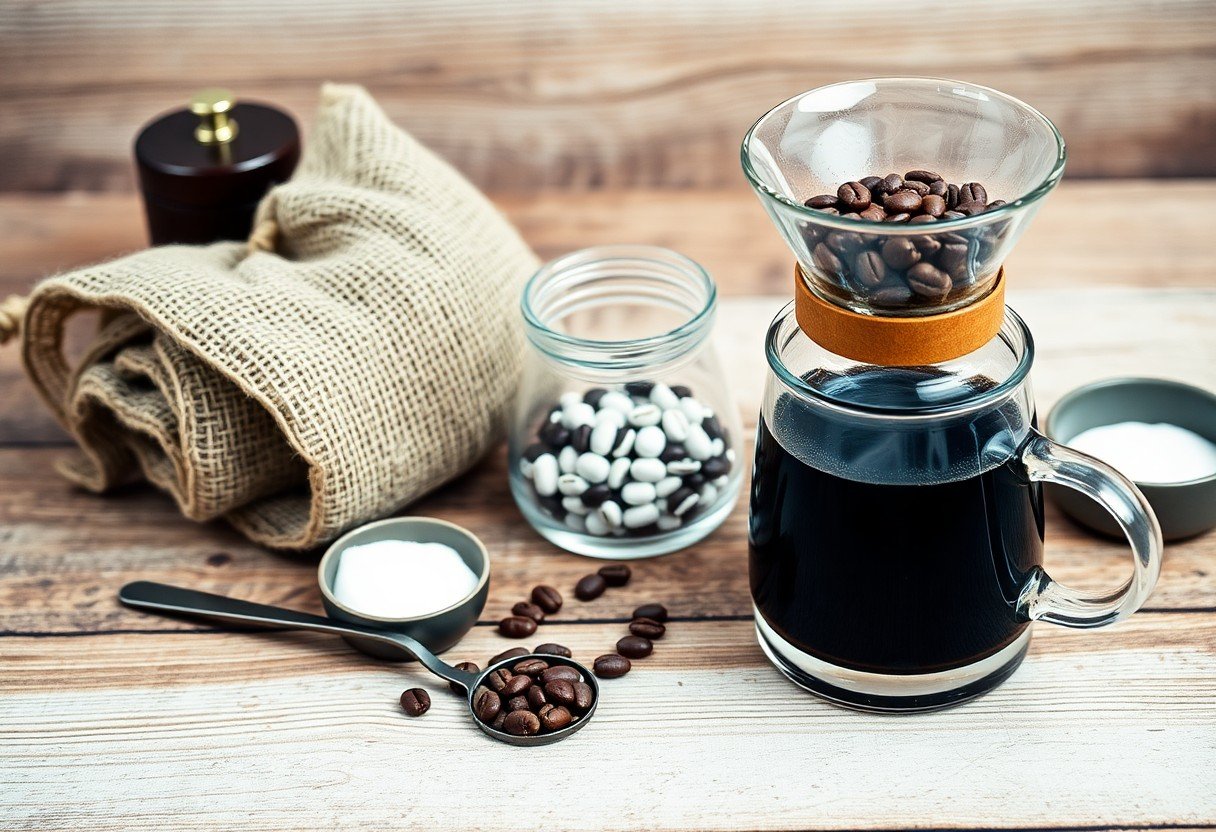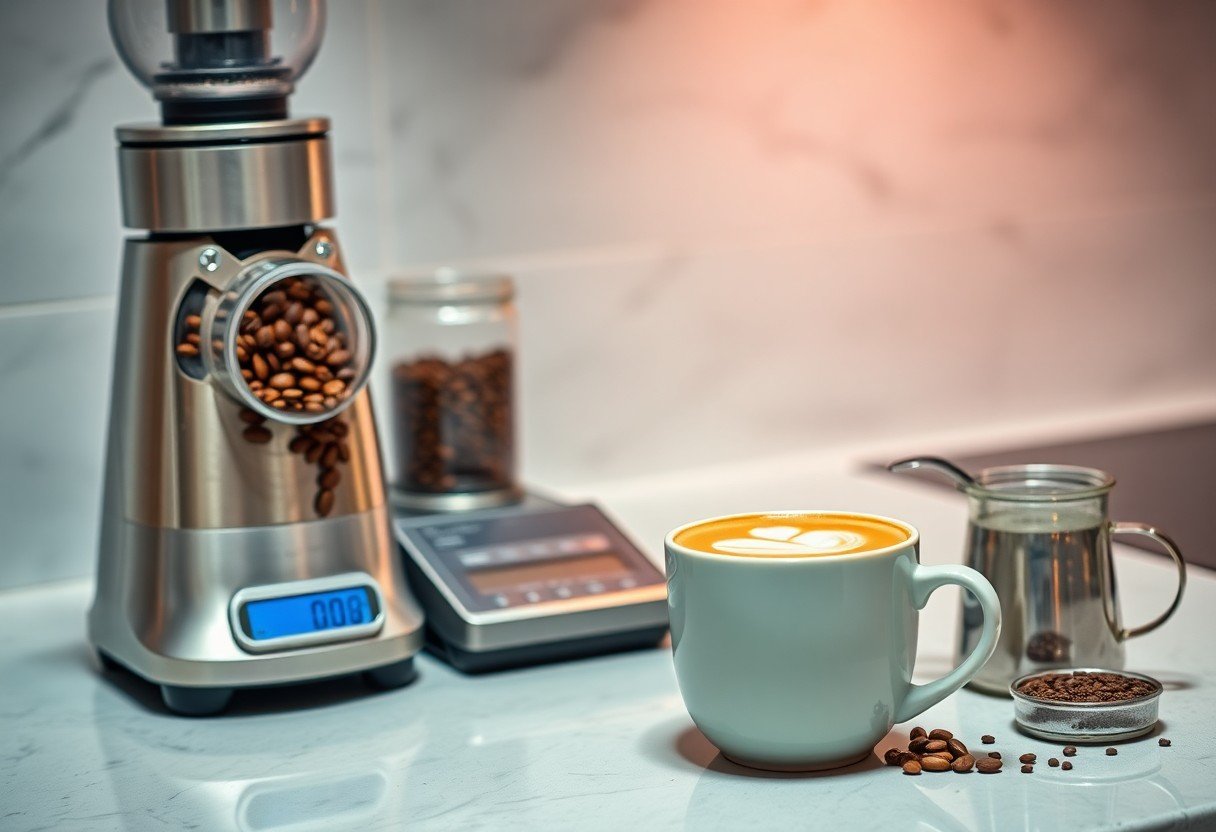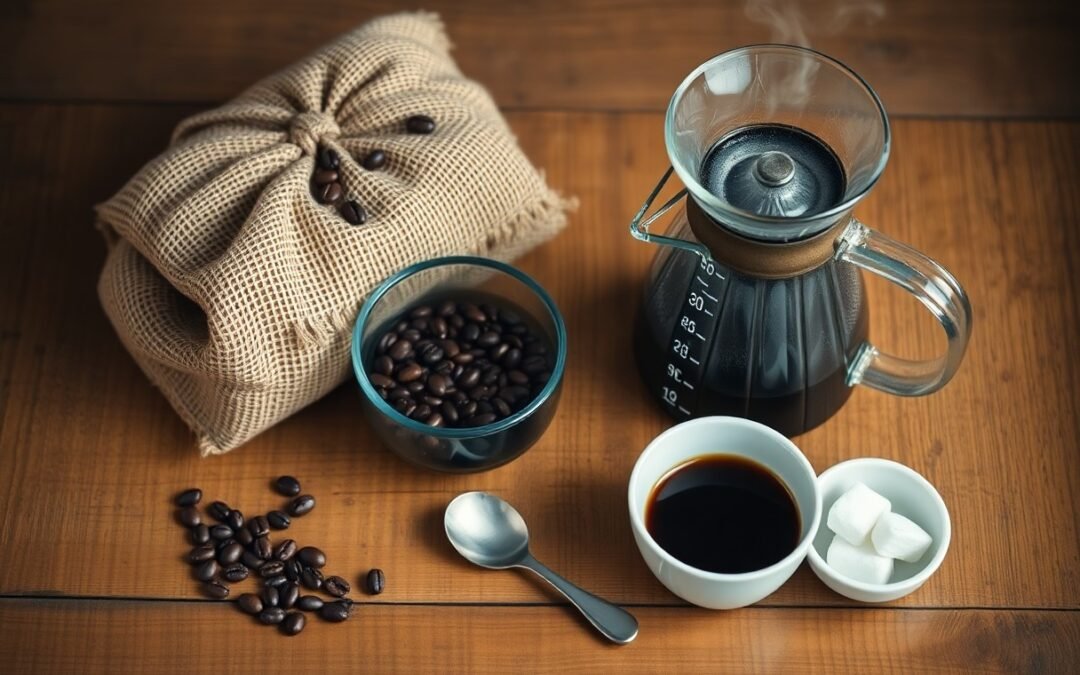Morning rituals can be elevated with the perfect cup of coffee crafted right in your kitchen. By mastering a few necessary techniques and selecting quality ingredients, you can transform your daily brew into an aromatic and sophisticated experience. This guide will provide you with the steps you need to create a delightful cup that not only energizes you but also indulges your senses every day.

Selecting the Perfect Beans
Your choice of coffee beans will ultimately define your morning brew. Focusing on bean type, age, and roasting can significantly enhance your cup’s flavor and aroma. Look for beans that match your taste preferences, whether you crave a fruity, bright flavor or a deep, chocolatey richness. Understanding the nuances can transform your daily coffee experience into an indulgent ritual.
Understanding Coffee Varieties and Flavor Profiles
Coffee prides itself on various varieties, each offering unique flavor profiles influenced by origin, processing methods, and altitude. Arabica beans tend to be sweeter and more acidic, while Robusta boasts a bolder, earthier profile rich in caffeine. Exploring these differences helps you tailor your selections to suit your palate and enhance your daily brew.
Sourcing Fresh, High-Quality Beans
Freshness is paramount when selecting coffee beans. Beans that have been roasted recently, ideally within the last two weeks, will deliver superior flavors. Seek out local roasters or specialty stores that emphasize quality and freshness; the aroma and taste of freshly roasted beans far exceed mass-produced options.
Opt for beans labeled with roast dates to ensure maximum flavor. Many top-tier roasters provide detailed information about their sourcing practices, often highlighting direct trade or single-origin offerings. This not only guarantees freshness but also supports sustainable farming practices. Explore local farmers markets or online subscriptions that curate fresh beans, allowing you to try various roasts and varieties regularly. Elevating your coffee experience hinges on this crucial step in selecting quality beans tailored to your preferences.
Mastering the Brewing Method
Your brewing method significantly influences the flavor profile and aroma of your morning cup. Exploring different techniques reveals unique characteristics that can enhance your coffee experience. From the gentle immersion of the French press to the precise pour-over, each method offers distinct advantages. Choose one that aligns with your taste preferences and take your time to refine your technique for a consistently sophisticated brew.
Exploring Different Brewing Techniques: French Press vs. Pour Over
The French press is known for its rich, full-bodied flavor, achieved by steeping coarsely ground coffee for several minutes before pressing down the plunger. In contrast, the pour-over method allows for greater control over brewing time and water flow, resulting in a cleaner, more nuanced cup. Both techniques can produce excellent results; selecting between them often comes down to personal flavor preferences.
The Impact of Water Temperature and Quality
Water temperature and quality can drastically alter your coffee’s taste. Ideally, water should be heated to 195°F to 205°F for optimal extraction. Using filtered water can prevent impurities, such as chlorine, from tainting the flavor. Poor quality water can mute the coffee’s natural flavors, while the right temperature ensures balanced extraction, enhancing the aromatic experience.
Water Temperature and Quality Impact
| Factor | Description |
|---|---|
| Temperature | Between 195°F and 205°F produces ideal extraction. |
| Quality | Filtered water improves flavor by removing impurities. |
Water Quality and its Influence
| Quality Type | Effect on Flavor |
|---|---|
| Filtered | Enhances purity of taste, showcasing coffee nuances. |
| Tap | May introduce flavors from chlorine or minerals. |

Grinding: The Art and Science
Mastering the grind of your coffee beans enhances both flavor and aroma, allowing you to extract the best from your brew. Each coffee preparation method requires a different grind size to optimize extraction. Fine grinds yield intense flavors for espresso, while coarser grinds work wonders in French presses. Experimentation is key; even slight adjustments can lead to markedly different results, fine-tuning your daily cup to perfection.
Choosing the Right Grind Size for Your Method
Selecting the appropriate grind size directly influences your coffee’s taste and aroma profile. Espresso demands a fine grind for quick extraction, while pour-over methods benefit from a medium grind for optimal flow rate. French presses require a coarse grind to prevent excessive bitterness and allow proper steeping. Consider your preferred brewing method and adjust accordingly to achieve a balanced, flavorful cup.
The Role of Burr vs. Blade Grinders
Burr grinders offer a consistent grind size, providing more control over the extraction process than blade grinders. Blade grinders chop the beans unevenly, leading to inconsistent flavors, with some particles over-extracted and others under-extracted. This inconsistency can significantly impact your morning coffee experience, making burr grinders the preferred choice for those seeking a refined and aromatic brew.
Burr grinders utilize two revolving abrasive surfaces to crush coffee beans uniformly, allowing you to achieve precise grind sizes vital for various brewing techniques. Their ability to produce consistent particle size means that you’ll have a more evenly extracted cup, as water interacts with coffee grounds more effectively. In contrast, blade grinders slice beans randomly, creating a chaotic mixture of fine and coarse particles, resulting in unpredictable flavors. Investing in a burr grinder elevates your coffee-making ritual, resulting in a tastier, artisanal experience every time.
Elevating the Experience with Aromatics
Infusing your morning brew with aromatics can transform a simple cup into a captivating sensory experience. By introducing herbs, zests, and extracts, you create layers of complexity that can awaken your senses. Whether it’s a dash of cinnamon, a sprig of fresh mint, or a hint of citrus zest, these elements can elevate the taste and aroma, making each sip both sophisticated and indulgent. Experiment with various combinations to find your signature blend that resonates with your palate.
Incorporating Spices and Flavor Enhancers
Complementing your coffee with spices like nutmeg, cardamom, or allspice adds warmth and depth. You can also consider flavor enhancers such as vanilla extract or almond syrup to enrich the taste profile. Simply adding these ingredients during brewing or in your cup allows for a more fragrant and flavorful experience, turning your daily routine into a delightful ritual.
The Benefits of Freshly Ground and Whole Ingredients
Using freshly ground spices and whole ingredients maximizes flavor potency and aroma. Whole spices retain crucial oils longer, ensuring that when you crush or grind them just before use, the resulting flavors burst forth vibrantly. This freshness not only enhances your drink but also provides a broader range of aromatic notes, transforming your coffee into something exceptional and tailored to your taste.
Freshly ground spices and whole ingredients can dramatically impact your cup by offering a freshness that pre-ground counterparts lack. For instance, freshly ground cinnamon provides a more robust and fragrant profile, while whole cloves unleash a potent aroma when crushed just before brewing. Studies suggest that using whole spices can enhance health benefits, as they often contain higher levels of antioxidants and crucial oils compared to their pre-ground versions. Personalizing your coffee with these elements ensures every morning’s cup is not merely a beverage but a cherished experience. This commitment to quality will shine through in every invigorating sip.
Crafting the Perfect Cup: Timings and Ratios
Achieving the ideal brew combines the right timings and precise coffee-to-water ratios, ensuring each cup delivers depth and complexity. The balance between these elements enhances extraction, allowing your morning ritual to flourish into a sophisticated experience. Understanding how to measure accurately and time your brewing process precisely will elevate your coffee to a level that rivals your favorite café.
Calculating Coffee-to-Water Ratios for Optimal Strength
To optimize strength, a general guideline is to use a ratio of 1:15 coffee to water. For every gram of coffee, you’ll need around 15 grams of water. Adjust this ratio to cater to your taste preferences—if a bolder brew is your aim, consider increasing the coffee amount slightly, or decrease it for a lighter flavor. Using a scale for precision can enhance consistency and ensure your cup is always on point.
Timing: The Secret to Unlocking Flavor Nuances
The brewing time significantly influences the extraction of flavors from your coffee grounds. A typical pour-over should take about 3 to 4 minutes, while French press brewing requires around 4 to 5 minutes. Shorter siphon and aeropress methods can highlight brighter notes, while longer steeping times allow for deeper, fuller bodies. Tailor these times to coax the most desirable flavors from your beans.
Experimenting with timing can unveil a spectrum of flavors in your coffee. For example, if you steep your coffee for just two minutes, you might taste acidity and fruitiness prominently. Conversely, extending the brew time may bring out richer, chocolatey notes. Find your preferred interval by starting with popular timeframes and adjusting based on your palate. Keep track of your experiments in a coffee journal to benchmark flavors against brewing times, perfecting your method becomes an engaging endeavor as you navigate and refine your coffee experience.
Final Words
Conclusively, perfecting an aromatic, sophisticated cup of coffee at home every morning involves selecting high-quality beans, mastering precise brewing techniques, and paying attention to water quality and temperature. By tailoring grind size to your brewing method and experimenting with different flavors, you can elevate your daily ritual. Invest in the right equipment, refine your skills through practice, and allow your palette to guide you. With these strategies, you will transform your morning coffee into a luxurious and delightful experience that sets a positive tone for the day ahead.
FAQ
Q: What type of coffee beans should I use for a sophisticated cup?
A: Select high-quality, freshly roasted beans, preferably single-origin varieties such as Ethiopian or Colombian for distinct flavors. Experiment with different roast levels to find your preference.
Q: How important is the grind size in making the perfect cup?
A: Grind size is significant as it affects the extraction process. For a brewing method like French press, use a coarse grind, while espresso requires a fine grind. Match the grind size to your brewing equipment for optimal results.
Q: What brewing method should I choose for the best flavor?
A: Methods like pour-over or French press are ideal for enhancing flavors. Each method extracts different qualities from the coffee, so choose one that aligns with your taste preferences.
Q: How does water quality impact the final cup of coffee?
A: Water quality is vital as it makes up about 98% of your coffee. Use filtered water free from impurities to enhance taste. Aim for a water temperature of around 195°F to 205°F for optimal extraction.
Q: How can I enhance the aroma of my coffee at home?
A: Enhance aroma by using freshly ground coffee and pre-warming your brewing equipment. Consider adding spices like cinnamon or nutmeg to the grounds before brewing for an added layer of fragrance.

